Was ist SOD, wer ist verantwortlich und was ist seine Philosophie
Science of doom (SOD) (hier) ist ein Klima-Wissenschaftsblog von bester Qualität. Es ist etwas mühsam herauszubekommen, wer ihn betreibt. Schließlich wird man bei Wikipedia fündig. Es sind die beiden Professoren Peter Ward (Paläontologe, Univ. Washington, USA, hier) sowie Donald Brownlee (Atronom an der Univ. Washington, USA, hier). Wer Englisch mag, sollte SOD im Original lesen, denn in der deutschen Übersetzung geht einiges von der angelsächsischen Ironie verloren. Außerdem sind wir der Meinung, dass insbesondere die SOD-Kommentare oft fast ebenso wertvoll sind wie der SOD-Text selber. Hier tummeln sich meist Fachleute. Verbissene Auseinandersetzungen wie in manch anderen Klima-Blogs (wir nennen besser keine Namen), die sich durch mangelnde Fachkenntnissen und der sich daraus ergebenden Unbelehrbarkeit der Streithähne auszeichnen, sucht man in SOD glücklicherweise vergebens. Wir möchten fernen betonen:
Die von uns verfasste deutsche Version ergänzt in vielen Einzelheiten das Original und ist nicht immer die wörtliche Übersetzung. Insbesondere haben wir – wenn es uns zur Verdeutlichung als notwendig errschien – eigene Textteile, Kommentare und fachliche Ergänzungen hinzugefügt.
Das Rätsel der Eiszeiten, Teil 1 – Einführung
Für viele Teilnehmer an der Klimadebatte ist es ein Schock, wenn sie zum ersten Mal erkennen, wie oft und wie stark sich das Klima in der Vergangenheit geändert hat. Selbst Prinz Charles war vermeintlich irritiert, als er fragte:
Nun, wenn es ein Mythos ist und die globale wissenschaftliche Gemeinschaft in eine Art Verschwörung involviert ist, wie kommt es dann, dass auf der ganzen Welt der Meeresspiegel über sechs Inches [über 15 cm] höher liegt als vor 100 Jahren?
Dieser Kommentar von Prinz Charles ist komisch, aber nicht überraschend, da die meisten Menschen keine Ahnung von der Klimavergangenheit haben (Meine tief empfundene Entschuldigung an Prinz Charles, falls er von den Englischen Medien falsch zitiert worden sein sollte)
Man schaue sich nur die folgende "unbequeme" Temperaturgraphik an, wenn man sehen will, wie sich die Temperaturen im Laufe der letzten 150.000 Jahre und weiter noch während der letzten Millionen Jahre verändert haben:
Quelle: “Holmes’ Principles of Physical Geology” 4th Ed. 1993
Die letzte Million Jahre sind unglaublich. Der Meeresspiegel – soweit wir das mit einiger Sicherheit sagen können – hat sich um mindestens 120 m nach oben und unten bewegt, vielleicht sogar noch um mehr. Es gibt nun zwei Sichtweisen, die diese massiven Änderungen zu erklären meinen. Besonders interessant ist dabei, wie die gleichen Daten auf derart unterschiedliche Weisen interpretiert werden können. Entweder nämlich so:
Die gewaltigen Änderungen des Klimas der Vergangenheit, die wir aus Meeresspiegel- und Temperatur-Rekonstruktionen erkennen können, zeigen, dass sich das Klima immer ändert. Sie zeigen, dass die Temperaturzunahme des 20. Jahrhunderts nichts Ungewöhnliches sind. Und sie zeigen, dass das Klima viel zu unvorhersagbar ist, um genau modelliert werden zu können.
Oder ganz anders so:
Die gewaltigen Änderungen des Klimas der Vergangenheit zeigen die sensitive Natur unseres Klimas. Kleine Änderungen der Solarstrahlung und kleinere Änderungen der Verteilung der Sonnenenergie über die Jahreszeiten (durch kleinere Änderungen im Erdorbit) haben zu Klimaänderungen geführt, die heute katastrophal wären. Klimamodelle können diese Änderungen der Vergangenheit erklären. Und wenn wir den Strahlungsantrieb des anthropogenen CO2 mit diesen kleinen Änderungen vergleichen, erkennen wir, was für eine unglaubliche Gefahr wir für unseren Planeten erschaffen haben.
Ein Datensatz also, aber zwei völlig verschiedene Sichtweisen. Wir werden versuchen, diese "Geister der Klimavergangenheit" im Nachfolgenden besser zu verstehen.
Das Rätsel der Eiszeiten, Teil II – Lorenz
Vor sehr langer Zeit habe ich den Beitrag Ghosts of Climates Past geschrieben. Ich habe viele Paper zu den Eiszeiten und den Zwischeneiszeiten gelesen, bin aber nie an den Punkt gelangt, von dem ab ich irgendetwas Zusammenhängendes schreiben konnte. Dieser Beitrag ist mein Versuch, wieder in die Gänge zu kommen – nachdem ich lange Zeit zu beschäftigt gewesen war, irgendwelche Artikel zu schreiben.
In seinem Paper aus dem Jahr 1968 mit dem Titel Climatic Determinism – präsentiert auf einem Symposium unter dem Motto Causes of Climatic Change – schreibt der berühmte Edward Lorenz:
Die oft akzeptierte Hypothese, dass die physikalischen Gesetze, die das Verhalten der Atmosphäre bestimm, das Klima eindeutig festlegen, wird kritisch geprüft. Es ist zu betonen, dass es physikalische Systeme gibt, deren Statistiken über unbegrenzte Zeitintervalle eindeutig durch herrschende Gesetze und Umweltbedingungen gesteuert werden (transitive Systeme); und es andere Systeme gibt, bei denen das nicht der Fall ist (intransitive Systeme).
Es gibt auch bestimmte transitive Systeme (fast intransitive Systeme), deren Statistiken sich über sehr lange, aber begrenzte Zeitintervalle merklich von einem Intervall zum nächsten unterscheiden. Es wird hier die Möglichkeit in Erwägung gezogen, dass langzeitliche klimatische Änderungen eher aus der Fast-Intransitivität der Atmosphäre resultieren, als dass sie von äußeren Umweltänderungen verursacht werden.
Diese Sprache könnte vielen Lesern etwas dunkel vorkommen. Aber Lorenz verdeutlicht in seinem Paper weiter:
……Während dieses Symposiums kann erwartet werden, dass viele alternative und manchmal Widerspruch auslösende Erklärungen angeboten werden. Einige davon werden Änderungen des Klimas den Änderungen der Eigenschaften der Ozeane zuordnen. Andere können sich auf Variationen vulkanischer Aktivität beziehen. Wieder andere werden Fluktuationen der Sonnenstrahlung berücksichtigen.
Die von mir gewählten Erklärungen haben als Hauptgrund für die Änderungen des Verhaltens der Atmosphäre die Änderungen der Umgebung dieser Atmosphäre. Jene, die solche Erklärungen propagieren, könnten mit sehr guten Gründen annehmen: falls Umwelteinflüsse vor langer Zeit die Gleichen gewesen wären wie heute, müsste auch das historische Klima das Gleiche gewesen sein; daher die Notwendigkeit des Bezugs auf Umweltänderungen als eine Erklärung. Kurz gesagt, sie könnten zu der nicht unvernünftigen Schlussfolgerung kommen, dass die Umgebung der Atmosphäre zusammen mit der internen Physik der Atmosphäre das Klima auf mehr oder weniger eindeutige Weise bestimmt.
Genau diese Hypothese, nämlich dass einzig die die Atmosphäre steuernden physikalischen Gesetze für das Klima verantwortlich sind, möchte ich kritisch überprüfen.
[Link zum Original dieses Ausschnitts: http://scienceofdoom.files.wordpress.com/2013/10/lorenz-1968-1.png]
Lorenz fasst hier also transitive Systeme ins Auge – das heißt, die Anfangsbedingungen bestimmen nicht den zukünftigen Klimazustand. Stattdessen tun dies die Physik und die „äußeren Einflüsse“ oder Antriebe (wie die auf dem Planeten einfallende Solarstrahlung). Lorenz schreibt weiter:
Vor allem, wenn die ein physikalisches System steuernden Gleichungen linear sind, kann ein einheitlicher Satz langfristiger Statistiken oft in analytischer Form ausgedrückt werden. Allerdings sind die die Atmosphäre steuernden Gleichungen in höchstem Maße nicht linear. Die den Hauptteil der Schwierigkeiten ausmachenden Nichtlinearität ist Advektion – der Transport von bestimmten Eigenschaften der Atmosphäre von einem Gebiet zu einem anderen Gebiet durch die Bewegung der Atmosphäre selbst. Da die Bewegung der Atmosphäre von einer Stelle zu einer anderen ebenfalls eine der Eigenschaften der Atmosphäre ist, die von abhängigen Variablen repräsentiert wird, werden jene Terme in den Gleichungen, die die Advektion repräsentieren, quadratisch sein, was das gesamte System nichtlinear macht.
Im Falle nichtlinearer Gleichungen ist die Einheitlichkeit langzeitlicher Statistiken nicht sicher. Die mathematische Modellbildung als System von gekoppelten Gleichungen, ausgedrückt in deterministischer Form, zusammen mit einem spezifizierten Satz von Anfangsbedingungen, bestimmen die zeitabhängige Lösung. Diese erstreckt sich unendlich in die Zukunft und legt daher einen Satz langzeitlicher Statistiken fest. Bleibt die Frage, ob derartige Statistiken unabhängig von der Wahl der Anfangsbedingungen sind. Wir definieren ein transitives System von Gleichungen als eines, bei dem dies der Fall ist. Gibt es jedoch zwei oder noch mehr Sätze langzeitlicher Statistiken, von denen jede eine Wahrscheinlichkeit größer als Null für die Abhängigkeit von den gewählten Anfangsbedingungen aufweist, nennen wir das System intransitiv.
Bisher sind dies nur Definitionen. Die mathematische Theorie sagt uns aber, dass sowohl transitive als auch intransitive Systeme existieren. Mehr noch, bislang wurde kein einfacher Weg gefunden, zu entscheiden, ob ein willkürliches vorgelegtes Gleichungssystem transitiv oder intransitiv ist.
[Link: http://scienceofdoom.files.wordpress.com/2013/10/lorenz-1968-21.png]
Hier führt Lorenz das verbreitet bekannte Konzept eines „chaotischen Systems“ ein, in dem unterschiedliche Anfangsbedingungen zu unterschiedlichen langzeitlichen Ergebnissen führen. (Man beachte, dass es chaotische Systeme geben kann, in welchen unterschiedliche Anfangsbedingungen unterschiedliche Zeitreihen mit den gleichen statistischen Eigenschaften über einen Zeitraum erzeugen – daher ist "intransitiv" die restriktivere Bezeichnung (siehe die Originalarbeit für mehr Einzelheiten).
3. Beispiele eines intransitiven Systems
Da ein intransitives physikalisches System, in dem die physikalischen Gesetze nicht einheitlich das Klima steuern, ein ungewöhnliches Konzept ist, seien ein paar Beispiele genannt. Eines wird durch Laborexperimente zur Simulation bestimmter atmosphärischer Vorgänge geliefert (siehe Fultz et al. 1959 und Hide 1958). Der Versuchsaufbau besteht im Wesentlichen aus einem rotierenden Bassin mit Wasser, das einer unterschiedlichen Erwärmung ausgesetzt wird. Die Bewegung des Wassers wird durch ein Kontrastmittel sichtbar gemacht. Unter geeigneten Bedingungen ensteht ein sich um die Rotationsachse bewegendes Wellenmuster.
Unter bestimmten festgelegten Bedingungen wird eine Anordnung von vier Wellen unbegrenzt lange bestehen bleiben, wenn es sich erst einmal gebildet hat; aber eine Anordnung von fünf Wellen bleibt ebenfalls unbegrenzt lange bestehen. Das ist ein wirklich intransitives System. Externes Manipulieren wie umrühren des Wassers mit einem Bleistift kann das System von vier Wellen in eines mit fünf Wellen umwandeln und umgekehrt. Unter geringfügig veränderten festgelegten äußeren Bedingungen wie z. B. einer etwas höheren Rotationsgeschwindigkeit, wird sich nur das System mit fünf Wellen ausbilden. In diesem Falle ist das System transitiv. Transitivität ist eine qualitative Eigenschaft des Experiments, aber sie hängt definitiv ab von den quantitativen Eigenschaften der Eingangsgrößen.
Ein anderes Beispiel wird durch einfache numerische Modelle zur Simulation allgemeiner Eigenschaften der Atmosphäre geliefert (siehe z. B. Lorenz 1963). Sowohl transitive als auch intransitive Systeme sind leicht zu konstruieren. Der Unterschied zwischen ihnen kann einfach der numerische Wert eines einzelnen vorbestimmten Parameters sein.
Wie ist das nun in der realen Atmosphäre? Ist sie transitiv? Wir wissen es nicht. Die Atmosphäre ist weder ein Laborexperiment noch ein Zahlensatz in einem Computer, und wir können sie nicht abschalten und dann erneut in Bewegung setzen, um zu sehen, ob sich ein neues Klima bildet. Auch die derzeit bekannte mathematische Theorie gibt uns darauf keine Antwort.…
Wie war das doch gleich wieder mit der realen Atmosphäre? Es war nicht meine ursprüngliche Absicht, einen Pflock "Fast-Intransitivität" als Hauptgrund für eine Klimaänderung einzuschlagen. Allerdings ist die Fast-Intransitivität ein zu wichtiges Phänomen, um als Ganzes missachtet zu werden. Was dieses Symposium angeht, habe ich den deutlichen Eindruck, dass auch niemand anders einen solchen Pflock einschlagen wird. Lassen Sie mich also sagen, dass ich Fast-Intransitivität als prinzipiellen Grund für Klimaänderungen für möglich halte, aber nicht in der Lagen bin zu sagen, sie sei der wahrscheinlichste Grund. Vielleicht kann man einmal mehr sagen, wenn wir die Gelegenheit erhalten, die Lösungen von viel größeren numerischen Modellen auf viel längere Zeitintervalle auszudehen und dabei zu sehen, ob Fast-Intransitivität im Zeitmaßstab von Jahrhunderten und nicht nur von Jahren auftritt.
5. Schlussfolgerungen
Trotz unseres mageren Wissens über die Fast-Intransitivität können wir ein paar Schlussfolgerungen ziehen. Zum Einen kann die bloße Existenz langzeitlicher Klimaänderungen nicht aus sich selbst heraus als Beweis für Umweltveränderungen herangezogen werden; es gibt jetzt alternative Erklärungen. Und schließlich, was ist mit der nicht unwahrscheinlichen Möglichkeit, dass die Atmosphäre fast-intransitiv ist, falls die Umwelteinflüsse konstant sind, während gleichzeitig äußere Umweltveränderungen stattfinden? Die Auswirkungen dieser Änderungen werden dann schwieriger zu entdecken und kausale Beziehungen schwieriger zu etablieren sein. Zum Beispiel: eine Umweltveränderung, die einen Temperaturanstieg um 2°C zur Folge hat, könnte genau zu der Zeit erfolgen, wenn die Temperatur als Folge der Fast-Intransitivität um 2°C fällt. Die Umweltveränderung bleibt dann unbemerkt, weil niemand einen Grund erkennt, nach ihr zu suchen.
Zusammengefasst kann das Klima deterministisch sein oder auch nicht. Möglicherweise werden wir das niemals sicher sagen können. Wenn aber die mathematische Theorie weiter entwickelt wird, könnten wir hinsichtlich unserer Ansichten allmählich sicherer werden.
Nun, das ist ein interessanter Ansatz des bedeutenden Lorenz‘. Ein späteres Paper, nämlich von Kagan, Maslova & Sept (1994) kommentierte Lorenz‘ Studie aus dem Jahr 1968 und erzielte mit einem ziemlich einfachen Modell interessante Ergebnisse:
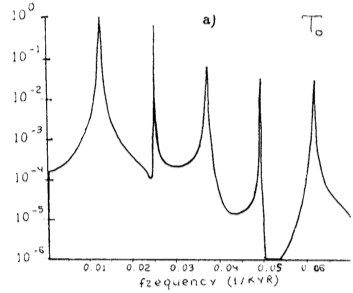
Bild: Spektrale Intensität von Klimaperiodizitäten gegen Frequenz in [1/tausend Jahre], die Periodenlänge ergibt sich aus dem Kehrwert der Frequenz.
Im paper von Kagen und Maslova findet sich weiter folgender Kommentar:
Man beachte folgende bemerkenswertesten Eigenschaften: erstens, die starken Maxima bei den Perioden 80 x 10³, 41 x 10³, 21 x 10³ und 18 x 10³ Jahren nahe der Exzentrizitäts-Periode (~100 x 10³ Jahre), der "precessional"-Periode (~41 x 10³ Jahre) sowie der Präzessions-Perioden (~23 x 10³ und ~19 x 10³ Jahre). zweitens, eine Abnahme der Amplituden der Ozeantemperatur-Oszillationen mit Perioden von 21 x 10³ und 18 x 10³ Jahren mit zunehmender Tiefe (oder Breite); und drittens die führende Rolle der Änderungen des Partialdrucks des atmosphärischen CO2 während Änderungen der kontinentalen Eismassen (cf. Abbildungen 2a und 2b).
Diese Eigenschaften der Lösung sind ähnlich den aus geochemischen Studien gewonnenen Daten (Broecker und Danton 1989; Imbrie 1992; Ruddiman und McIntyre 1984), jedoch in keiner Weise verbunden mit Variationen der astronomischen Parameter. Im Einzelnen sind 80 x 10³ Jahre eine Periode diskontinuierlicher Auto-Oszillationen. 41 x 10³ und 21 x 10³ Jahre sind Perioden ihrer Schwingungen, und 18 x 10³ Jahre ist eine Periode, die definiert wird durch die Differenz zwischen der Lebenszeit einer normalen (gegenwärtigen) und anormalen (umgekehrten) Zirkulation (Abbildung 2c). Mit anderen Worten, in unserem Fall ist der Grund für die oben genannten Eigenschaften die interne Variabilität des Klimasystems als Folge von diskontinuierlichen Auto-Oszillationen der ozeanischen thermohalinen Zirkulation.
Das heißt, ein paar zusammen arbeitende gekoppelte Systeme können ausgeprägte Veränderungen des Erdklimas auslösen in Zeiträumen wie 80.000 Jahren. Falls irgendjemand denken könnte, dass es lediglich obskure ausländische Journale sind, die über Lorenz‘ Arbeit schreiben, so hat der viel veröffentlichte Klimaskeptiker(?) James Hansen dazu Folgendes zu sagen {– Redaktionelle Anmerkung: Das Fragezeichen wurde von uns hinzugefügt, denn wir kennen J. Hansen nur als AGW-Aktivisten, seine Eigenschaft als "Klimaskeptiker" ist uns neu –}:
Die Variation der globalen mittleren jährlichen Lufttemperatur während des 100-jährigen Kontrolllaufes zeigt die weiter unten stehende Abbildung. Die globale mittlere Temperatur am Ende des Laufes ist sehr ähnlich derjenigen zu Beginn, aber es gibt eine substantielle Variabilität ohne äußeren Antrieb in allen Zeiträumen, die untersucht werden können, das heißt bis zu Zeiträumen von Jahrzehnten. Man beachte, dass eine Änderung (ohne äußeren Antrieb) der globalen Temperatur von etwa 0,4°C (0,3°C, wenn die Kurve mit einem 5-jährigen gleitenden Mittel geglättet wird) in einem 20-Jahres-Zeitraum aufgetreten ist (Jahre 50 bis 70). Die Standardabweichung über das 100-jährige Mittel beträgt 0,11°C. Diese Variabilität (ohne äußeren Antrieb) der globalen Temperatur im Modell ist nur wenig kleiner als die beobachtete Variabilität der globalen Temperatur während des vorigen Jahrhunderts wie in Abschnitt 5 diskutiert. Die Schlussfolgerung, dass eine (ohne äußeren Antrieb und unvorhersagbare) Klimavariabilität für einen Großteil der Klimaänderung ursächlich sein kann, ist von vielen Forschern betont worden; zum Beispiel Lorenz (1968), Hasselmann (1976) und Robock (1978).
Und hier nun der Kontrolllauf aus der Studie von J. Hansen:
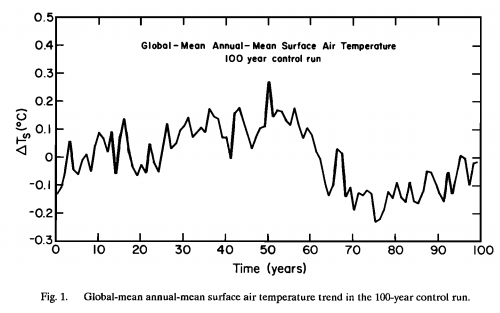
Abbildung (J. Hansen): Trend der globalen jährlichen Mitteltemperatur während des 100-jährigen Kontrollaufes.
{– Redaktionelle Anmerkung: Inzwischen weiß man, dass solche Fluktuationen, wie in der Abbildung von J. Hansen gezeigt, durch "Persistenz" oder Autokorrelation jeder realen Temperaturreihe auftreten. Die hier geltende Theorie (Hurst-Exponent) ist rein empirisch, also modellfrei, physikalische Ursachen der Persistenz von Temperaturreihen sind nicht bekannt (hier) –}.
In späteren Artikeln werden wir einige Theorien der Milankovitch-Zyklen beleuchten. Verwirrenderweise laufen viele unterschiedliche Theorien, die zumeist auch noch jeweils inkonsistent miteinander sind, alle unter der gleichen Bezeichnung "Milankovitch".





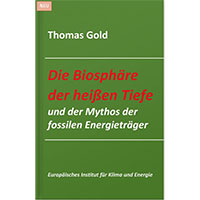
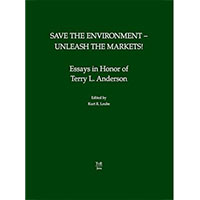
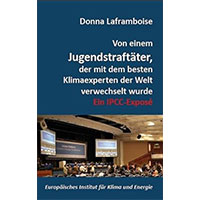
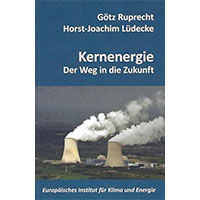
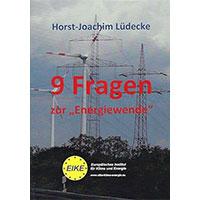

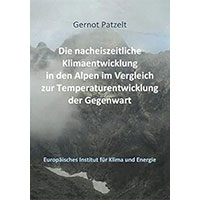
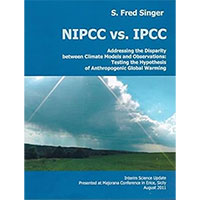
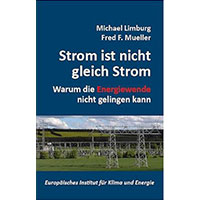
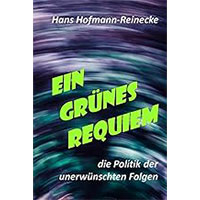


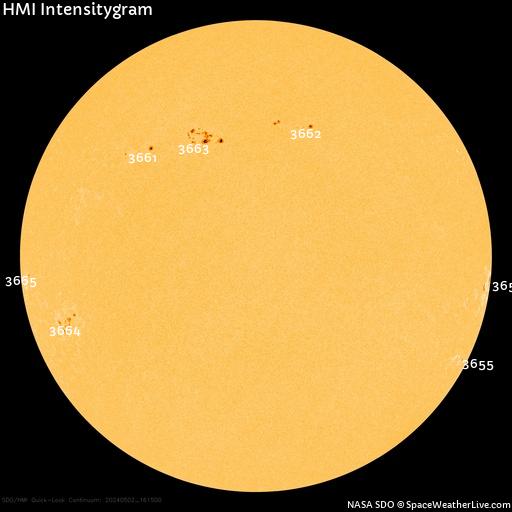
Wir freuen uns über Ihren Kommentar, bitten aber folgende Regeln zu beachten:
- Bitte geben Sie Ihren Namen an (Benutzerprofil) - Kommentare "von anonym" werden gelöscht.
- Vermeiden Sie Allgemeinplätze, Beleidigungen oder Fäkal- Sprache, es sei denn, dass sie in einem notwendigen Zitat enthalten oder für die Anmerkung wichtig sind. Vermeiden Sie Schmähreden, andauernde Wiederholungen und jede Form von Mißachtung von Gegnern. Auch lange Präsentationen von Amateur-Theorien bitten wir zu vermeiden.
- Bleiben Sie beim Thema des zu kommentierenden Beitrags. Gehen Sie in Diskussionen mit Bloggern anderer Meinung auf deren Argumente ein und weichen Sie nicht durch Eröffnen laufend neuer Themen aus. Beschränken Sie sich auf eine zumutbare Anzahl von Kommentaren pro Zeit. Versuchte Majorisierung unseres Kommentarblogs, wie z.B. durch extrem häufiges Posten, permanente Wiederholungen etc. (Forentrolle) wird von uns mit Sperren beantwortet.
- Sie können anderer Meinung sein, aber vermeiden Sie persönliche Angriffe.
- Drohungen werden ernst genommen und ggf. an die Strafverfolgungsbehörden weitergegeben.
- Spam und Werbung sind im Kommentarbereich nicht erlaubt.
Diese Richtlinien sind sehr allgemein und können nicht jede mögliche Situation abdecken. Nehmen Sie deshalb bitte nicht an, dass das EIKE Management mit Ihnen übereinstimmt oder sonst Ihre Anmerkungen gutheißt. Wir behalten uns jederzeit das Recht vor, Anmerkungen zu filtern oder zu löschen oder zu bestreiten und dies ganz allein nach unserem Gutdünken. Wenn Sie finden, dass Ihre Anmerkung unpassend gefiltert wurde, schicken Sie uns bitte eine Mail über "Über Uns->Kontakt"#61: Ulrich Wolff sagt:
am Dienstag, 25.02.2014, 15:53
#60 F. Ketterer,
Lieber Herr Ketterer,
offenbar haben Sie trotz intensiver Suche noch immer keinen Fehler in meinen Artikeln gefunden. Nach Ihren massiven Angriffen ist Ihr Ärger darüber menschlich durchaus verständlich.
##############################
Trara, trara, trara
Sehr geehrter Herr Wolff: you made my day!
#61: Ulrich Wolff sagt: am Dienstag, 25.02.2014, 15:53
Wichtig ist: Es sind Wassertropfen und Eispartikel in der Atmosphäre, deren Wirkung den Verdunstungsvorgang an der Oberfläche der Ozeane umkehrt und den Wasserkreislauf antreibt.
###################################################
Womit wir beim Grundschul-Niveau in der Beschreibung des Wasserkreislaufs wären. t.
Das Geschwurbel, welches ich ausgelassen habe, kommentiere ich nun nicht mehr. Da lobe ich mir die deutlichen Worte des Admin im letzten Satz des Kommentars #38.
#60 F. Ketterer,
Lieber Herr Ketterer,
offenbar haben Sie trotz intensiver Suche noch immer keinen Fehler in meinen Artikeln gefunden. Nach Ihren massiven Angriffen ist Ihr Ärger darüber menschlich durchaus verständlich. Auch das Phasendiagramm des Wassers kann daran jedoch nichts ändern.
Zu Ihrem letzten Filibuster einige Anmerkungen:
Nur kurzzeitig existente Gleichgewichtszustände werden in der Atmosphäre sehr selten beobachtet. -„Geht die Lufttemperatur gegen Null, so liegt die Eistemperatur gewöhnlich darunter,“ – Eis, das die Schwerkraft aus einem Volumenelement entfernt hat, kann nicht sublimieren. – Die Anlagerung von Wasserdampf an Keime im Volumenelement schreitet munter fort, der Dampfgehalt sinkt weiter. – Für sehr dünne H2O Schichten gilt das Phasendiagramm nicht, so dass die Sublimation ausfallen muss.
Wichtig ist: Es sind Wassertropfen und Eispartikel in der Atmosphäre, deren Wirkung den Verdunstungsvorgang an der Oberfläche der Ozeane umkehrt und den Wasserkreislauf antreibt.
#57: Ulrich Wolff sagt:am Montag, 24.02.2014, 18:01
53 F. Ketterer,
lieber Herr Ketterer,
Physik ist nicht ganz leicht: Das Phasendiagramm des Wassers zeigt an, wann Wasserdampf kondensiert oder gefriert, richtig? Sobald das beginnt, entzieht die Schwerkraft der Atmosphäre die flüssige und feste Phase, der Dampfgehalt sinkt, richtig? Daraus folgt: Geht die Lufttemperatur gegen Null so geht auch der Wasserdampfgehalt gegen Null! – An der Grenzfläche zwischen Ozeanen und Atmosphäre bleibt die Luft mit Wasserdampf gesättigt, richtig? – Zu Hinweisen darauf und auf die Wirkung der Schwerkraft bitte die Artikel lesen!
##############################################
Ich zitiere aus Ihrem Posting:
Ulrich Wolff sagt: „Physik ist nicht ganz leicht:“
Richtig; sie sind der lebende Beweis!
Ulrich Wolff sagt: „Das Phasendiagramm des Wassers zeigt an, wann Wasserdampf kondensiert oder gefriert, richtig?“
Bedingt richtig: Das Phasendiagramm zeigt vor allem den Dampfdruck des Wassers bei gegebener Temperatur an. Daneben sehen Sie an den Kurven die GLEICHGEWICHTSbedingungen (p,T) zwischen den angrenzenden Phasen.
Ulrich Wolff sagt: „Sobald das beginnt, entzieht die Schwerkraft der Atmosphäre die flüssige und feste Phase, der Dampfgehalt sinkt, richtig?“
Definitiv nicht richtig; sinken kann der Wassergehalt (g/m³). Den Dampfgehalt ist durch die Zustandsgrößen definiert: Haben Sie zwei Phasennebeneinander vorliegen sehen Sie am Phasendiagramm wie hoch der Dampfdruck (beispielsweise über den Eiskristallen) ist. Wird der Dampfdruck geringer, sublimiert Eis in die Gasphase. Auch der Wassergehalt sinkt nur, wenn es zum Niederschlag kommt. Zu meinem Glück sehe ich an mehr Tagen Wolken als ich Regen sehe: Ihre Annahme ist schlicht und sie ist falsch!
Sie konnten doch sicher auch schon Wolken entstehen und verschwinden sehen, ohne dass ein Tropfen Regen auch dem Boden ankam.
„Geht die Lufttemperatur gegen Null so geht auch der Wasserdampfgehalt gegen Null!“
Wie oft denn noch? Nein das ist und bleibt falsch:
Bei Null Grad C haben Sie einen Dapmfdruck von 6 mbar (über Eis) bei -10°C immer noch 2,5 mbar. Ist die Luft „trockener“ wird das Eis sublimieren.
„An der Grenzfläche zwischen Ozeanen und Atmosphäre bleibt die Luft mit Wasserdampf gesättigt, richtig?“
Ja, das ist richtig und Trivial.
Nur der Umkehrung, dass dies nur an der Grenzflächen Ozean und Atmosphäre der Fall ist stimmt nicht. In jeder Wolke ist die Luft mit Wasserdampf gesättigt. Im Sommer ist die Luft über einer Wiese morgens sehr oft mit Wasserdampfgesättigt. Im Nebel ist die Luft mit Wasserdampf gesättigt.
#58 NicoBaecker,
die Schwerkraft kennt das Phasendiagramm nicht, richtig? Das Phasendiagramm kennt die Schwerkraft nicht, richtig? Ohne die Schwerkraft könnte es jedoch weder regnen, hageln oder schneien, richtig?
Wo ist Ihr Verständnisproblem? Oder ist Physik doch zu schwierig?
lieber Herr wolff,
„Das Phasendiagramm des Wassers zeigt an, wann Wasserdampf kondensiert oder gefriert, richtig?“
Ja, Sie haben lange zu dieser Erkenntnis gebraucht.
“ Sobald das beginnt, entzieht die Schwerkraft der Atmosphäre die flüssige und feste Phase, der Dampfgehalt sinkt, richtig?“
Unsinn. Wenn das so waere, wuerde das Phasendiagramm nur ohne Schwerkraft gelten. Das ist aber falsch.
Sie widersprechen sich mit dem ersten und zweiten Satz, merken Sie das gar nicht? Das Phasendiagramm stellt die Abhaengigkeit der Phasengrenze in Abhaengigkeit von Druck und Temperatur dar, und nicht von der Schwerkraft, wie man leicht sehen kann.
53 F. Ketterer,
lieber Herr Ketterer,
Physik ist nicht ganz leicht: Das Phasendiagramm des Wassers zeigt an, wann Wasserdampf kondensiert oder gefriert, richtig? Sobald das beginnt, entzieht die Schwerkraft der Atmosphäre die flüssige und feste Phase, der Dampfgehalt sinkt, richtig? Daraus folgt: Geht die Lufttemperatur gegen Null so geht auch der Wasserdampfgehalt gegen Null! – An der Grenzfläche zwischen Ozeanen und Atmosphäre bleibt die Luft mit Wasserdampf gesättigt, richtig? – Zu Hinweisen darauf und auf die Wirkung der Schwerkraft bitte die Artikel lesen!
Das Rätsel der Eiszeiten bei SoD in „Ghosts of Climates Past“, part 1 to 16:
Ein kurzer Scan der Veranstaltung bestätigt, dass sich die Suche nach den Ursachen auf Veränderungen der Energiezufuhr in die Materie von Atmosphäre und Erdkruste und/oder auf systeminterne Veränderungen beschränkt. Die Größe des reflektierten Anteils solarer Energieflüsse ist als Konstante eine heilige Kuh. So bleibt Svensmark mit seinem Hinweis auf den Einfluss des Eintrags von Kondensationskeimen aus dem Weltraum auf die Wolkenbildung in der illustren Truppe des SoD ein Prediger in der Wüste!
#54 SoD,
my statement in #50 reads:
„Physics is observation, not equations! Equations are nothing but the mathematical attempt to approximate and describe such observation.“
Galileo, Kepler, Maxwell, Planck, Einstein – have been successfully applying this method!!!!!
My statement in #50 reads:
„ „You miss the energy fluxes from vaporization, convection and conduction. You would have to integrate over local temperatures and local emissivities. The equations (!!) do not allow the use of mean values!“
SoD does not respond, but states:
But the question I have answered is not – what is the sum of all heat transfers, or what is the value of convection – instead, I have answered, „what is the radiative heat transfer?“ and how does this in the sum of all of the heat transfer terms (along with the heat capacity) determines the change in temperature.
„Even if SoD is referring to a partial contribution to an unbalancesd Earth`s Energy budget, it will not be temperarure change but change of enthalpy – a „little“ difference under the topic „Das Rätsel der Eiszeiten“.
My statement in #50 reads:
„The (!) atmospheric temperature profil vs. height happens to be a rather complex space and time dependent function! Please tell us the set of equations, you are using and describing this profile for our rotating planet! „??
SoD does not respond, but states:
Amazingly we can measure these parameters (temperature profile vs height) as boundary conditions.?(Also the President of the USA states: „Yes we can!“)
Ulrich Wolff (#51):
In response to my comment:
„1. Emission of radiation from the surface (temperature and emissivity will give us this)“?“
Ulrich Wolff said:
„You miss the energy fluxes from vaporization, convection and conduction. You would have to integrate over local temperatures and local emissivities. The equations (!!) do not allow the use of mean values!“
This is quite fundamental in heat transfer, check out any undergraduate heat transfer textbook.
To calculate instantaneous radiative heat transfer from a surface you need to know the temperature of the surface (and the other properties as already outlined in my previous comments).
To calculate instantaneous conduction from a surface you need to know the temperature of the surface, the temperature of another position and the material property conductivity.
To calculate instantaneous convection from a surface you need to know the temperature of the surface and a few other properties but this one is the very difficult calculation as it relies on turbulence.
But the question I have answered is not – what is the sum of all heat transfers, or what is the value of convection – instead, I have answered, „what is the radiative heat transfer?“ and how does this interact with the atmosphere.
The sum of all of the heat transfer terms (along with the heat capacity) determines the change in temperature.
But at any given moment each one is independent. The sum of them, combined with the local heat capacity determines the future temperature. The future temperature is one factor in future heat transfer. Not in current heat transfer.
As already explained, and will not be explained again, there is an equation for radiative transfer in the atmosphere. This does not depend, at this second, on how much conduction and convection is taking place. It only depends on surface temperature, temperature profile, GHG concentration.
The future temperature does depend on knowing each of the terms.
In physics, being specific to what problem we are trying to solve is essential. Ulrich Wolff does not appear to understand this.
Find a heat transfer textbook. Find chapter one problems. Do they tell you you cannot calculate heat transfer from conduction without knowing convection? No.
I have made no comment about convection. I have simply stated that there is an equation for radiative transfer through the atmosphere.
This is no different from my point #42 in response to another irrelevance from U. Wolff. Whether or not we know the temperature one week from now is not the question I am answering.
What would be wonderful is for U. Wolff and commenting colleagues to either concede, or dispute, the original question.
— In respect to my response on boundary conditions,
„2. Atmospheric temperature profile vs height“?
Ulrich Wolff asks,
„The (!) atmospheric temperature profil vs. height happens to be a rather complex space and time dependent function! Please tell us the set of equations, you are using and describing this profile for our rotating planet! “
Amazingly we can measure these parameters (temperature profile vs height) as boundary conditions.
Once again you are mixing up completely independent ideas. I have made no claim on an ability to forecast anything about the climate. No claim on an ability to forecast temperature profile in the atmosphere.
I have simply stated that, with knowledge of the surface temperature, temperature profile through the atmosphere, and GHG concentration through the atmosphere, we can quite precisely determine the upwards and downwards spectrum and flux at the TOA and the surface.
And I have provided evidence. Evidence that U. Wolff has not addressed.
Perhaps Ulrich Wolff can stop to consider what I am actually writing, and actually claiming, versus some different idea that he is commenting on.
— Ulrich Wolff then asks,
„3. GHG concentration vs height??And also the following material property:“
Why do you neglect liquid and solid matter being the strongest radiation emitters within the atmosphere???
I don’t neglect it. Water and ice have absorption and emission properties. So in cloudy skies, once water and ice reach a certain proportion they act essentially as „blackbodies“, absorbing all radiation and emitting as „a blackbody“ at their local temperature.
It’s just another case like GHGs in the atmosphere.
——
Then I don’t understand item 4. Perhaps this is lost in translation.
Ulrich Wolff in #50 indicates a new paradigm in physics. Equations mean nothing, only observations.
„Physics is observation, not equations!“
Thankfully, it is now clear what U. Wolff thinks not just about climate science, but about all physics. Galileo, Kepler, Maxwell, Planck, Einstein – wrong, just wrong.
No more comment from me on this new methodology.
Can anyone address the actual points in #42 by staying on the specific subject and without driving a wrecking ball through the entire field of physics?
I wonder.
#52: F.Ketterer sagt: am Montag, 24.02.2014, 08:27
. . .
Next to the flaws in physics: I am sorry to say: your English is just a pain to read (“ore curst”).
###################
(Fast) schon peinlich mein Typo: “ore curst” sollte “ore crust” sein.
#51: Ulrich Wolff sagt:
am Sonntag, 23.02.2014, 14:34
#48, „Science of Doom“,
„What we are usually interested in is calculating the top of atmosphere upwards spectrum (and flux) and the surface downward spectrum (and flux).??So we integrate vs optical thickness (kind of a proxy for height), and with a little mathematical manipulation (see equations 13-16) we get the TOA spectrum (the downward surface equation is not shown there but follows in the same way). ??This requires us to know the following boundary conditions:??
. . .
Evidently you are missing the fraction of radiation, which is not being forwarded towards space ore crust but is being absorbed and temporarily stored within each layer containing ice/and or water particles to be (eventually)?dropping down ore being emitted in form of radiation later.
I hope theses articles including references can help you understanding the real „Atmospheric Green House Effect“ : http://tinyurl.com/q585w66 http://tinyurl.com/cs8bcqu
http://tinyurl.com/ophwjr4
##############################################
Knowing the flaws of your papers (and in your perception of physics) discussed extensively here
http://tinyurl.com/WolffError
and
here
http://tinyurl.com/Replik-Auf-Wolff
I do not see why someone should pay a cent to see what your phantasies produced lacking basics in physics.
Next to the flaws in physics: I am sorry to say: your English is just a pain to read (“ore curst”).
#48, „Science of Doom“,
„What we are usually interested in is calculating the top of atmosphere upwards spectrum (and flux) and the surface downward spectrum (and flux).??So we integrate vs optical thickness (kind of a proxy for height), and with a little mathematical manipulation (see equations 13-16) we get the TOA spectrum (the downward surface equation is not shown there but follows in the same way). ??This requires us to know the following boundary conditions:??
1. Emission of radiation from the surface (temperature and emissivity will give us this)“?
You miss the energy fluxes from vaporization, convection and conduction. You would have to integrate over local temperatures and local emissivities. The equations (!!) do not allow the use of mean values!
„2. Atmospheric temperature profile vs height“?
The (!) atmospheric temperature profil vs. height happens to be a rather complex space and time dependent function! Please tell us the set of equations, you are using and describing this profile for our rotating planet!
„3. GHG concentration vs height??And also the following material property:“
Why do you neglect liquid and solid matter being the strongest radiation emitters within the atmosphere???
„4. The absorptivity/emissivity of each GHG we are considering against wavelength (this is contained in the large HITRAN database)??Items 3 & 4 allow us to calculate the transmissivity through the atmosphere from each height to the top of atmosphere.“
Evidently you are missing the fraction of radiation, which is not being forwarded towards space ore crust but is being absorbed and temporarily stored within each layer containing ice/and or water particles to be (eventually)?dropping down ore being emitted in form of radiation later.
I hope theses articles including references can help you understanding the real „Atmospheric Green House Effect“ : http://tinyurl.com/q585w66 http://tinyurl.com/cs8bcqu
http://tinyurl.com/ophwjr4
#42, Science of Doom,
Ulrich Wolff (# 39 ??– wurde wohl versehentlich von Admin. gelöscht):??
„Wheather forcast is based on many equations! However, more than one week into the future it is blablabla! Statistics of Observation – not equations – is defining and explaining „Climate“ of the past. How can equations within predicting models be more than blablabla??“
“
SoD: „I have made no comment on one week into the future.“
Please tell us: How could possibly the same „equations“ within drastically oversimplified predicting models reach a forecast longer ranging than a week?
SoD: „The question at hand is what equation(s) governs the instantaneous emission and absorption in the atmosphere and how does that affect the upwards and downwards radiation through the atmosphere. I await eagerly for someone to produce alternative equations of radiative transfer.??[Of course, no one will produce any and silent readers will know why].“
Physics is observation, not equations! Equations are nothing but the mathematical attempt to approximate and describe such observation. (For example: The Gaussion Distribution is nothing but a fiction not existing in reality! Unfortunately it is quite often used carelessly because otherwise 1. „equations“ cannot be solved and 2. the real distributions are not known.)
In case of „radiation transfer“ only this remark 1. The „equations“ cannot be solved including „non radiative energy fluxes“ and including the dominating radiation sources of liquid and solid matter and 2. The distribution of such liquid and solid matter within the atmosphere is unknown.
#38: „Es geht im vorliegenden Beitrag um die Ursachen der Eiszeiten, nicht um die Obsession „CO2-Treibhauseffekt“ von einigen Kommentatoren.
MfG
Admin“
====================================================
Die Autoren des Artikels haben mit der „Obsession „CO2-Treibhauseffekt““ zuerst angefangen, indem sie diese Fiktion als Fakt dargestellt haben, Zitat: „Und wenn wir den Strahlungsantrieb des anthropogenen CO2 mit diesen kleinen Änderungen vergleichen…“.
Wolf Schneider (# 44):
„As the equation of radiative transfer is a differential equation, you can not solve it Unless You choose a reasonable boundary condition. Can you come up with one?“
The differential equation (eqn 12 in http://scienceofdoom.com/2011/02/07/understanding-atmospheric-radiation-and-the-%E2%80%9Cgreenhouse%E2%80%9D-effect-%E2%80%93-part-six-the-equations/) gives the change in spectral intensity with height at each wavelength.
What we are usually interested in is calculating the top of atmosphere upwards spectrum (and flux) and the surface downward spectrum (and flux).
So we integrate vs optical thickness (kind of a proxy for height), and with a little mathematical manipulation (see equations 13-16) we get the TOA spectrum (the downward surface equation is not shown there but follows in the same way).
This requires us to know the following boundary conditions:
1. Emission of radiation from the surface (temperature and emissivity will give us this)
2. Atmospheric temperature profile vs height
3. GHG concentration vs height
And also the following material property:
4. The absorptivity/emissivity of each GHG we are considering against wavelength (this is contained in the large HITRAN database)
Items 3 & 4 allow us to calculate the transmissivity through the atmosphere from each height to the top of atmosphere.
Item 2 is necessary because it is one factor in the emission of radiation from each layer in the atmosphere (with only temperature we could calculate the „black body emission“, and combined with the GHG concentration and spectral properties we can calculate the real emission).
#38, Kommentar Admin,
SoD und Prf. Lüdecke behaupten, die Wirkung der angeblichen Treibhausgase würde die mittlere Temperatur an der Oberfläche der Erdkruste um 33 K anheben. Im Vergleich dazu sind der Anstieg der Temperatur zum 5 – 6 K und der Meeresspiegel um 120 m seit dem Ende dem Ende der letzten Eiszeit eher eine Bagatelle. Allerdings waren auch daran die „lieben Treibhausgase“ definitiv nicht beteiligt!
#43: Wolf Schneider richtig, danke.
Um zum Thema etwas beizutragen muß wohl grob gegen einen Verhaltensartikel (Punkt 2 letzt er Teil)verstoßen werden.
Daß sich ein Teil (Großteil?) der Erde unter einem Eis und Schneemantel befand ist höchstwahrscheinlich nicht einem Über- oder Unterangebot an sogenannten „Treibhausgasen“ zu verdanken. Es war und wird wohl ein singuläres Ereignis bleiben. Verursacht, vermutlich, durch den Ausbruch mehrerer Vulkane, in Folge der Kontinentalverschiebung. Die in die Atmosphäre geschleuderten Partikel bildeten, Beispiele bieten die Vulkanausbrüche in jüngster und jüngerer Zeit, einen für die Sonne undurchdringbaren Schirm, so daß sie auch nicht mehr so intensiv aus dem Meeren und Ozeanen Nachschub liefern konnte, für eine noch stärkere Ausbreitung des Eisschildes, wegen Mangel an gefrierenden Regen. Was dann zusammen mit der Rückbildung der Staubhülle zum allmählichen Rückgang der Vereisung führte.
#42
SOD says:
„bla bla bla…“
As the equation of radiative transfer is a differential equation, you cannot solve it unless you choose a reasonable boundary condition.
Can you come up with one?
Greetings
#39
Herr Dr. Paul,
nach meinem Verständnis muss man,
da der Faktor 0,2 für die Emissivität im Koeffizienten von T^4 steckt, die 311 K
mit vierter Wurzel 5 multiplizieren, um auf die gleiche Abstahlungsleistung zu kommen.
Das ergibt (311 K)*1,49 = 465 K = 192°C.
Da multiplikative Rechenoperationen auf Grad Celsius grundsätzlicher Unfug sind, ist es somit purer Zufall, dass Sie bei der richtigen Größenordnung gelandet sind.
Der „Treibhauseffekt“ ist zwar Kokolores, Gerlich und Tscheuschner haben recht, aber bei Ihren Begründungen unterlaufen Ihnen leider unnötige Schnitzer.
Beste Grüße
Ulrich Wolff (# 39):
„Wheather forcast is based on many equations! HOWEVER, more than one week into the future it is blah blah blah! Statistics of Observation – not equations – is-defining and explaining „Climate“ of the past. How can equations widely Predicting models be more than blablabla?“
I have made no comment on one week into the future.
The question at hand is what equation(s) governs the instantaneous emission and absorption in the atmosphere and how does that affect the upwards and downwards radiation through the atmosphere.
Without agreeing on the foundation equations there is no point debating about the future deterministic, chaos, intransitivity, etc. Just two people drawing conclusions from different premises. That is, a complete waste of time.
Let’s assume for now that one week into the future is completely unknown and unknowable.
That means we can get back to the equations of right now. Would people like to claim that:
a) there are no equations of emission and absorption?
b) there may be equations but they are unknown
c) there are different equations and here they are (please produce them)
OR
d) the equations are well-known in the field of atmospheric physics and well-proven (and I have reproduced them correctly in my previously linked article)
I am going with d). I have produced a graph from an emininent physicist Richard M. Goody from his work „Atmospheric Radiation: Theoretical Basis“ (1964). This is the first figure in http://scienceofdoom.com/2010/11/01/theory-and-experiment-atmospheric-radiation/.
It compares the results of the equations vs the measured spectra. The results of the equations depend on knowledge of the surface temperature, the temperature profile through the atmosphere and the concentration of the GHGs. Take a look.
In other articles (links already provided) I have produced theory vs experiment for downward radiation at the surface.
So, I have produced evidence in support of d.
I am waiting for someone to provide evidence that this is not correct.
As a scientific theory it is falsifiable. It can be falsified by:
1. producing evidence (observations) that doesn’t match the theory
2. demonstrating that the equations of radiative transfer lead to another result which is a contradiction of the original theory or another theory
3. demonstrating that the derivation of the equations are false
It cannot be falsified by random claims.
Perhaps some of the commenters are confusing politics with science. In politics randomly changing the subject or reciting slogans appears to be a well-established principle.
In science staying on topic is a necessity.
I await eagerly for someone to produce alternative equations of radiative transfer.
[Of course, no one will produce any and silent readers will know why].
besso keks (#36):
„do you think that thermalisation and Jablonskis’s law can influence the ability of CO2 to reradiate the absorbed energy?
Why?“
What is Jablonski’s law?
Even without that the question is not clear. What do you think happens? Perhaps if you explain that it will be easier to understand what to highlight.
In brief, the collision rate in the troposphere is much faster than spontaneous emission. Therefore, when a CO2, water vapor (or other GHG) molecule absorbs thermal radiation this energy is lost in collision with other molecules. This is thermalisation. A local parcel of air has a „common temperature“, so N2, O2, CO2, H2O are all at the same temperature (in a small enough volume) due to the rapid rate of collisions.
CO2, water vapor (and other GHG) molecules radiate according to their temperature and their emissivity at a given wavelength.
The form of the equation that governs this is very wavelength dependent – it is Plancks law for that temperature at that wavelength x emissivity at that wavelength x number of that molecule.
Which part of this do people think is wrong? And have you found your idea in a physics textbook? Please produce this physics textbook.
Hr. Wolff schon wieder:
„Es ist interessant zu erfahren, dass sich Herr Prof. Lüdecke zur Verteidigung des auch von ihm propagierten CO2-Treibhauseffektes jetzt offenbar hinter den Klassikern dieser Irreführung, der „Science of Doom“ verstecken will!“
Lieber Herr Wolff, was wollen sie denn sagen? Wissen sie nicht, dass der THE weder von Lüdecke, noch SoD noch sonst irgenwelchen Personen proklamiert wird, dieser ist schlicht und einfach physikalische Realität. Nur weil sie als Laie irgendwo im www von anderen Laien irgdwas lesen und daraus ihre Meinung stricken, veränder das an der Wissenschaft nicht einen mm. Ok soweit?
„Den hochkarätigen Schwätzern ist bisher nicht aufgefallen – oder wollen sie es verbergen, dass „back radiation“ nichts anderes ist, als eine Emission, die von fester und flüssiger Materie ausgeht, der auf unterschiedlichen Wegen Energie zufließt.“
Sie beleidigen Leute, denen sie nicht mal ein Glas Wasser reichen dürfen. Fühlen sie sich irgendwie stark dabei?
Sie haben uns ja schon gezeigt, dass sie nicht mal Phasendiagramme des H2O schnallen, aber blöd reden und beleidigen, das ist ihr Niveau, das können sie, bravo.
„Man erkennt nicht – oder will nicht erkennen – dass einige Spurengase nichts anderes bewirken, als Spektren und nicht die Größe de Energieflüsse zu verändern.“
Herr Wolff, sie erkennen das nicht, so einfach ist das!
„Man erkennt nicht – oder will nicht erkennen – , dass die Temperaturen der Erdkruste als Folge der Zeitdauer des Durchlaufes solarer Energieflüsse um Mehr als 250 K ansteigen und dass Wasser und Eis in der Atmosphäre und nicht Spurengase mit dem atmosphärischen Treibhauseffekt an dieser „verhinderten Abkühlung“ beteiligt sind! “
Herr Wollf, wir wissen mittlerweile, dass sie diesen Unsinn denken. Ohne jede physikalische Basis freilich oder hätten sie nun was gefunden, was ihren Glauben stütze, hmm?
Selbstverständlich strahlen auch IR aktive, gasförmige Moleküle, zwar nicht „schwarz“ und nicht mal „grau“, aber eben diskret in ihren Banden und Spektrallinien.
Übrigens Herr Wolff: Referenzen sind nicht die Texte die sie selbst irgendwo im www hinterlassen und sich dann drauf beziehen und meinen, sehet her, da steht es doch…
Das was sie hier schreiben, sind Hirngespinste, bestenfalls und ich frage sie noch einmal, was suchen sie in Klimaforen?
#32: Wolf Schneider verstanden haben Sie nichts,
sonst hätten Sie mit S&B und der absoluten Temperatur in Kelvin nachgerechnet und meine Zahlen (Temperaturen in Celsius) bestätigt.
P/A = sigma T^4
Das ist das S&B-Gesetz für Scharzkörperstrahlung.
P/A ist die Strahlungsleitung in Watt pro Fläche (1m^2),
sigma die Stefan-Boltzmann Konstante,
T die Temperatur natürlich in Kelvin.
Setzen wir also links die 532 W/m2 von K&T ein,
sigma ist bekanntlich 5,670 x 10^-8 (gerundet),
so erhalten wir für die 4.Wurzel der absoluten Temperatur 311,230494919072 K,
entsprechend 38,080494919 °Celsius (gerundet)
mal 5 für den Emissionsfaktor 0,2
ergibt 190,402474595 °Celsius, jetzt NICHT mehr gerundet.
Ich habe mir erlaubt daraus knapp unter 200°Celsius zu machen.
Die Strahlungsleistung ist in dem Kindergartenmodell von Kiel und Trendberth (K&T) definiert pro Fläche AUF DER ERDOBERFLÄCHE,
also eine Strahlungsempfänger-Definition.
Die bedeutet physikalisch, dass die Leistung auf der Erdoberfläche, auf die es hier ankommt, mit dem Quadrat der Entfernung der Strahlungsquelle von dieser Erdoberfläche abnimmt.
Darauf bin ich noch gar nicht eingegangen.
Also physikalisch ein Ding der Unmöglichkeit für das arme CO2, das ja auch kein grauer Körper ist und dann noch heißer werden müsste???
Und wie schnell müsste es dann abkühlen bei 0,04%??? (Lesen Sie bitte bei Gerlich nach)
Wenn sie das nicht verstehen,
fragen Sie Ihren Arzt oder Apotheker bevor Sie sich zur Sache äußern.
mfG
Es ist interessant zu erfahren, dass sich Herr Prof. Lüdecke zur Verteidigung des auch von ihm propagierten CO2-Treibhauseffektes jetzt offenbar hinter den Klassikern dieser Irreführung, der „Science of Doom“ verstecken will! Den hochkarätigen Schwätzern ist bisher nicht aufgefallen – oder wollen sie es verbergen, dass „back radiation“ nichts anderes ist, als eine Emission, die von fester und flüssiger Materie ausgeht, der auf unterschiedlichen Wegen Energie zufließt. Man erkennt nicht – oder will nicht erkennen – dass einige Spurengase nichts anderes bewirken, als Spektren und nicht die Größe de Energieflüsse zu verändern. Man erkennt nicht – oder will nicht erkennen – , dass die Temperaturen der Erdkruste als Folge der Zeitdauer des Durchlaufes solarer Energieflüsse um Mehr als 250 K ansteigen und dass Wasser und Eis in der Atmosphäre und nicht Spurengase mit dem atmosphärischen Treibhauseffekt an dieser „verhinderten Abkühlung“ beteiligt sind!
#35: Günter Heß sagt:
„Your #29 is right on target.“
Dear Mr. Heß,
is it right on reality/truth too???
cheers
#29: Science of Doom sagt:
„Blah blah blah vs Equations“
Dear SoD,
do you think that thermalisation and Jablonskis’s law can influence the ability of CO2 to reradiate the absorbed energy?
Why?
Greetings
I hate the autocorrection Funktion on my IPhone. Sorry.
I wanted to write:
Dear SOD,
Thank you very much for your links and contribution.
Your #29 is right on target.
Regards
Günter Heß
Der Science of Doom,
Think you for your contribution and your links.
Your #29 is right on target.
Best Regards
Günter Heß
Dr Paul (ref #31),
No, I asked you (ref #29) for the equations you believe govern emission and absorption in the atmosphere.
Or, to explain what is wrong with the equations I provided in my previously supplied link.
Probably you can’t read the equations I provided. They are explained by Subrahmanyan Chandrasekhar (Nobel prize winner) in his 1950 textbook. They’ve been around a long time.
In plain English they state (for the upwards direction):
The monochromatic intensity at the top of atmosphere =
The surface (monochromatic) radiation attenuated by the transmittance of the atmosphere (at that wavelength) + The sum of all the contributions of atmospheric radiation (at that wavelength) – each contribution attenuated by the transmittance (at that wavelength) from that location to the top of atmosphere
[Similar method for the downwards direction].
This gives the spectral result, integrated over all wavelengths it gives the flux.
The absorptivity at that wavelength = emissivity at that wavelength and the values are in the HITRAN database, the work of many decades by many hundreds (or thousands) of spectroscopic professionals.
Along with that we need to know the concentration of each radiatively-active gas and the temperature at each height in the atmosphere.
There is no Stefan-Boltzmann equation in this calculation. There is no blackbody assumption. Only fundamentals that have been known for more than 100 years.
I look forward to an eternal wait for someone to produce alternative equations that they believe govern radiative transfer in the atmosphere – OR to critique the equations I have provided.
There is a reason why this never happens.
#31
„using the S&B-equation and an emessivity of 0,2,
you need a temperature in the Atmosphere of
close to 40°C x 5 = close to 200°Celsius.
“
Mit der Einheit „Kelvin“ hätte ich ja so eine Rechenoperation noch verstanden, aber mit Grad Celsius?
Beste Grüße
to #29: yet another very interesting equation invented in Davos (Philipona et al), Switzerland and officially accepted by the WMO:
DLR = V/K + sigma T_i^4
• T_i is measured instrument temperature
• V is voltage measured by pyrgeometer sensor
• K is a sensitivity coefficient
you can see
on the left side of the equation is radiation and
on the right side is a blackbody.
this is institutionallized scientific fraud
and not measure,
because there is no blackbody.
Greeting from Germany
#28: Gunnar Innerhofer, glauben Sie im ernst, Sie helfen der Verbreitung der Hypothese eine (nicht messbaren) menschengemachten Klimaerwärmungskatastrophe durch CO2 nur einen Millimeter weiter,
wenn Sie sachlich berechtigte Einwendungen mit primitiven persönlichen Beleidigungen beantworten?
„If you have a radiation, but not the energy-source (temperature) in the atmosphere to produce such radiation, this would mean energy out of nothing.“
(Wenn du eine Strahlung hast ohne eine dazu erforderliche Strahlungsquelle (Temperatur), bedeutet das Energie aus dem NICHTS)
Also ein Verstoß gegen den ersten HS.
Nein Sie erreichen das Gegenteil,
ich kann nun leicht auf Menschen wie Sie und Ihre „Antworten“ hinweisen,
wenn ich als gewähltes Mitglied eines politischen Arbeitskreises für „Energie“,
zu dieser politischen Hypothese gefragt werde.
Als Vertreter einer solchen Hypothese würde ich Sie sofort feuern.
mfG
Quite some time ago I wrote the article:
Blah blah blah vs Equations.
Here is an extract, again apologies for my lack of German:
„Over the last few days, as at many times over the past two years, people have arrived on this blog to explain how radiation from the atmosphere can’t affect the surface temperature because of blah blah blah. Where blah blah blah sounds like it might be some kind of physics but is never accompanied by an equation..
..Now one thing is not amazing to me – of the tens (hundreds?) of concerned citizens commenting on the many articles on this subject who have tried to point out my “basic mistake” and tell me that the atmosphere can’t blah blah blah, not a single one has produced an equation.“
Equations are the essence of physics. I provide equations at http://tinyurl.com/o64wygp.
„Blah blah blah“ is the essence of confused people. Of which there are many.
When Dr Paul or a supporter produces an equation I will make further comment.
When Dr Paul or a supporter critiques the equations of radiative transfer already provided I will make further comment.
Until then – and we all know it will be a long time waiting – auf wiedersehen. Perhaps someone can email me at scienceofdoom -you know what goes here – gmail.com when the happy day arrives.
Hr. Paul #27:
„Ich hoffe Gunni freut sich darüber“
Ja, wenn klein Pauli weniger Unsinn in Foren kippen würde, wäre das nett. Danke.
#26: Gunnar Innerhofer stellt eine Frage:
„What´s that?“
weil er den einfachen physikalischen Satz als spezialisierter Meteorologe nicht versteht:
„If you have a radiation, but not the energy-source (temperature) in the atmosphere to produce such radiation, this would mean energy out of nothing.“
(Wenn du eine Strahlung hast ohne eine dazu erforderliche Strahlungsquelle (Temperatur), bedeutet das Energie aus dem NICHTS)
Also ein Verstoß gegen den ersten HS.
Wie kann man da Innerhofer helfen?
SOD hat ja den klugen Vorschlag gemacht, nicht über S&B zu sprechen, jedenfalls bei der gewünschten „Gegenstrahlung“, damit man das mit dem 1.HS ignorieren kann.
Dann passen ja Innerhofer und SOD bei der Verteidigung der errechneten Gegenstrahlung gut zusammen
und ich darf mich dann höflich aus diesem unphysikalischen Gespräch verabschieden.
Ich hoffe Gunni freut sich darüber.
mfG
Dr. Paul 24:
„“If you have a radiation, but not the energy-source (temperature) in the atmosphere to produce such radiation, this would mean energy out of nothing.“
What´s that? Do you understand your own writing?
SoD, Ebel, Nico, etc. told you billions of times where the energy comes from, you´r just ignoring simpl Pyhsics.
I´m simply sik of trying here further.
Perhaps SoD will go on to help Dr. Paul within his weaknesses, but honestly i can`t see any light to stop Paul´s mortifying nonsens.
The remaining in #24 is a disgrace in itself, as anybody can read. I need a beer now, no, i need ten´s of them…:-)
Thanks for all the kind greetings for a foreign language (English) speaker.
Dr. Paul,
Unfortunately I cannot understand your comment #24 – any of it.
I will ask questions of most parts but I don’t think you have answered any of my points from my last comment – other than to imply they are irrelevant. But which part is irrelevant?
The measurements?
– The downward atmospheric radiation („back radiation“)?
– The outgoing longwave radiation at top of atmosphere?
Or the Schwarzschild equations of radiative transfer?
So onto your comment #24..
1. You state: „If you have a radiation, but not the energy-source (temperature) in the atmosphere to produce such radiation, this would mean energy out of nothing.
Of course this is a violation of the first law!“
The atmosphere has a continuum of temperatures varying vertically, geographically and in time.
The atmosphere radiates at each location and at each time depending on the actual temperature of that part of the atmosphere. And depending on the emissivity of the atmosphere due to the various radiatively-active gases like water vapor, CO2, CH4 etc.
Please confirm – and please review the equations I provided already.
Please comment on these equations. Do you agree that they are correct?
2. You state: „If you are not willing to respect the Stefan-Bolzman-Law only for one half space and only for a black body we can stop arguing.“
This statement is not clear to me. I have made no comment on the Stefan-Boltzmann law and it is not needed to calculate the radiative transfer in the atmosphere.
One „sufficiently small portion“ of the atmosphere will radiate equally in all directions. I have already confirmed this point. But there is no physics that requires a body with varying temperatures and varying emissivities to emit equally in all directions. That is, the atmosphere will NOT radiate equally in all directions because it varies in temperature and in emissivity as we move upward/downward through the atmosphere.
Please write down the equations you think apply to a portion of the atmosphere – or the whole atmosphere – up to you. And please state the boundary conditions that you believe apply.
3. You state: „And lastly, the laps rate is no physical reason to stop radiation upward to space,
in the contrary.
Once again you use the immagination of blackbody-radiation according to temperature for gas molecules which cannot radiate at all.
Even if absorption of CO2 would be equal to emission, which is not the case in the troposphere, it would not suffice by far for more than 500W/m2.
The lapse rate does not STOP radiation upward to space.
The lapse rate means that the atmosphere is at different temperatures at different heights. Radiation is absorbed – both from above and from below – in each layer of the atmosphere.
Radiation is emitted – in all directions from each layer of the atmosphere.
The fact of radiative transfer means that upward and downward radiation are modified by the atmosphere as the radiation travels upwards and downwards. At least 60 years of physics accepts this fact and the equations that govern this process.
It seems that you don’t understand this subject at all. Instead of making sweeping statements in the style of „arguments from incredulity“ – try this instead:
EITHER
a) explain why the Schwarzschild equations are wrong, OR
b) explain why these equations (now accepted as correct) with the emissivity/absorptivity of various molecules from the HITRAN database result in a different answer, OR
c) explain why the HITRAN database is wrong
It must be one of a) or b) or c).
Alternatively, just ignore these fundamental questions. But then no point me replying. If others have questions about physics of „radiative transfer“, please ask.
4. You state: „So this amount of „backradiation“ in K&T is simple fraude like the hockeystick.“
This amount of „backradiation“ is measured and I have already provided the articles with measurements. If you want to claim „fraud“ you need to explain the measurements.
Are the measurements fraud?
#23: Science of Doom, sorry, this again is not the answer of the physical problem!
If you have a radiation, but not the energy-source (temperature) in the atmosphere to produce such radiation, this would mean energy out of nothing.
Of course this is a violation of the first law!
If you are not willing to respect the Stefan-Bolzman-Law only for one half space and only for a black body we can stop arguing.
If you argue with clouds an not atmosphaeric gases for more „emessivity“ we can stop too, because clouds correlate with cooling not with heating.
And lastly, the laps rate is no physical reason to stop radiation upward to space,
in the contrary.
Once again you use the immagination of blackbody-radiation according to temperature for gas molecules which cannot radiate at all.
Even if absorption of CO2 would be equal to emission, which is not the case in the troposphere, it would not suffice by far for more than 500W/m2.
If you accept the messurement of intransparency of the atmosphere for 15µm (CO2)radiation,
you cannot postulate a radiation of more than 100% at the same time.
This intransparency becomes less above the troposphere, so here CO2 can start to radiate to the space.
So this amount of „backradiation“ in K&T is simple fraude like the hockeystick.
from Germany
Dr Paul,
So, your argument is not that the atmospheric radiation „violates“ the first law, but you don’t believe the values of emission of radiation from the atmosphere.
This is a totally different question.
1. Where is the energy source? The energy source for the atmosphere is the energy it receives from the sun and the earth
a) directly absorbing some solar radiation (about 1/3)
b) absorbing much of the terrestrial radiation (the radiation emitted from the earth’s surface)
c) receiving the convective energy transported from the earth’s surface
2. Each small portion of the atmosphere radiates isotropically – in all directions. But the atmosphere is not all at one temperature.
The bottom of the atmosphere, say the boundary layer within 1km of the earth’s surface is about 5K colder than the earth’s surface. By contrast, the middle of the troposphere, say at 6-7km above the earth’s surface might be 40K-50K colder than the earth’s surface.
So the reason the atmosphere radiates more downwards than upwards is because there is a temperature gradient within the atmosphere (primarily setup by the lapse rate). The bottom „layer“ of the atmosphere radiates equally upwards and downwards. But much of the upwards radiation gets absorbed within each layer of the atmosphere above. What we see emitted from the top of the atmosphere is a „composite“ of this complex process.
Many people have trouble visualizing this process.
But the maths is straightforward and follows from the Schwarzschild equations of radiative transfer.
And the values predicted in the equations are what we measure:
I provided many measurements of the downward longwave radiation (the atmospheric „back“ radiation) in The Amazing Case of “Back Radiation” -Part One – and spectra of this radiation in The Amazing Case of “Back Radiation” – Part Two.
Likewise, in the article Theory and Experiment – Atmospheric Radiation I show a graph of calculated and observed spectra of Outgoing Longwave Radiation – the radiation at the top of atmosphere from both the atmosphere and the earth.
This is all physics well known and well proven for more than 50 years, and found in standard textbooks.
Lastly, you state that the emissivity of the atmosphere is between 0 and 0.2. This is not the case. In different places and times the emissivity of the atmosphere varies widely. Just as one example, with thick clouds the emissivity of the atmosphere is close to 1 and clouds cover the sky about 60% of the time.
If you take a look at the series Visualizing Atmospheric Radiation I built a model in Matlab from the fundamental Schwarzschild equations, using the spectroscopic values of emission and absorption of CO2 & water vapor from the HITRAN database and then gave many examples of what results occur depending on the amount of CO2, amount and location of water vapor.
The code is available for examination.
#18: Science of Doom sagt:
„#19: Gunnar Innerhofer“
Nice to have you here, Sir.
Please do not belive any word Innerhofer is saying.
He belongs to the „scientists“ who want to measure
a grennhouse effekt on TOA.
Obviously he had a problem with his source of oxigene…
cheers
#19: Gunnar Innerhofer is our specialist for ad hominem arguments
#18: Science of Doom, Apologies too for my bad English,
good question, but the wrong question to #14,
the right question is:
1)“where is the energy source?“
2) why does this source prefer the direction to the earth.
1) You need a temperature for radiation says the first law.
Hence it is a quantitative question, if you want to have more than 500W/m with an emissivity between 0 and 0,2 (gas).
2) is a qualitative question
auf Deutsch:
eine gute Frage, aber die falsche Frage für #14.
Die richtige Frage lautet:
1)“Wo ist die Energiequelle für diese Strahlung?“
2) Warum bevorzugt diese Strahlungsquelle die Richtung zur Erde?
zu 1) Der erste Hauptsatz erfordert eine Temperatur für eine (behauptete) Strahlung.
Das ist also eine quantitative Frage, wenn die Strahlung mehr als 500W/m2 betragen soll bei einer Emessivität von 0 – 0,2 (Gas)
zu 2) Das ist eine qualitative Frage
Gruß aus Old Germany
@ Science of Doom #18
nice to see you here, but just don`t worry, here at EIKE there are just a handful of people who have totaly misunderstood physical basics. They do not know, what the first and second law mean, have no idea of radiativ fluxes and did not learn very much about the structure an functions of the erath´s atmosphere. No problem, as far..
But we know that Dr. Paul`s imaginings have now found it´s way to Science of Doom and unfortunately, that’s wasted time with our hardcore believer Dr. (of what nobody realy knows )Paul. He spends tousand of hours for some years know, to introduce the big global climate conspiracy to humanity at all…:-)
Apologies that I cannot write German. I am reading the comments via Google translate, I am sure there are some hilarious results.. I am hopeful that some readers will understand English, and if not, can use Google translate..
I see the comment #14 via Google translate and I have to ask the writer, Dr. Paul, why would „Energy in to the atmosphere“ = „Energy out of the atmosphere“ violate the first law of thermodynamics?
The first law of thermodynamics is specifically, Energy In – Energy Out = Change in internal energy – that is, energy is always conserved.
#14: Dr.Paul sagt:
„violate the First Law“
Hallo Herr Dr. Paul,
so ist das in den diversen Foren.
Der eine spricht vom ersten HS, die Antwort bezieht sich dann auf den zweiten HS.
So kann man Diskussionen endlos hinziehen…
Grüße
Das ist eine Abhandlung, die in den Wolken schwebt und mit geheimnisvollen Wissenschafts-Raunen Tiefsinn vorgaukelt. Die Eis-Zeiten waren durch lang anhaltende Niederschläge in den gemässigten, v.a. in den nördlichen Zonen begleitet. Wieso hat es mehr geschneit und auch geregnet? Vermutlich, weil aus dem Kosmos mehr Kondensations-Keime kamen. Details unter http://www.klima-schwindel.com/Text_Klima_Schwindel.pdf
@ #12 Dr. Paul
„Das wissen die Modellbauer natürlich,
deshalb werden Einflussfaktoren „parametrisiert“
um diese Modelleigenschaft zu eliminieren.“
Bevor Sie hier noch mehr Unsinn zu verbreiten suchen, sollten Sie sich z.B. hier mal kundig machen:
http://tinyurl.com/pbrw5mz
#13: besso keks,
I told Fischer, that this
169 + 30 + 333 = 532 W/m2
would violate the First Law.
Gunnar Innerhofer hat in Physik nicht aufgepasst.
Solange AGW falsches behaupten, müssen sie korrigiert werden, was bei permanenter Wiederholung auch der Admin machen sollte.
mfG
#10: Gunnar Innerhofer sagt:
„…“And please don’t try to tell me that there is no such thing as downward radiation because it would violate the Second Law.“
Meinen Sie, daß diese Aussage richtig ist?